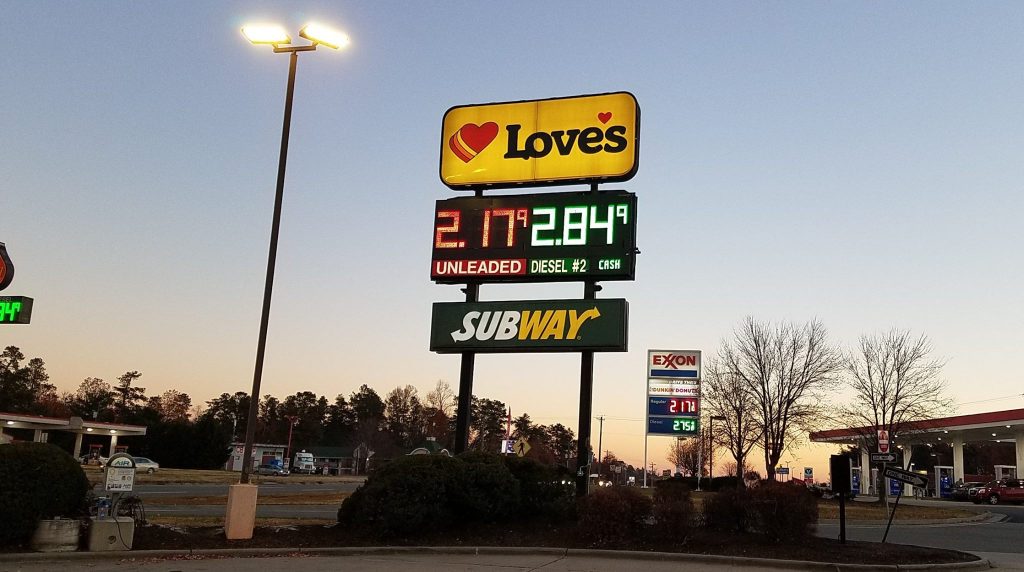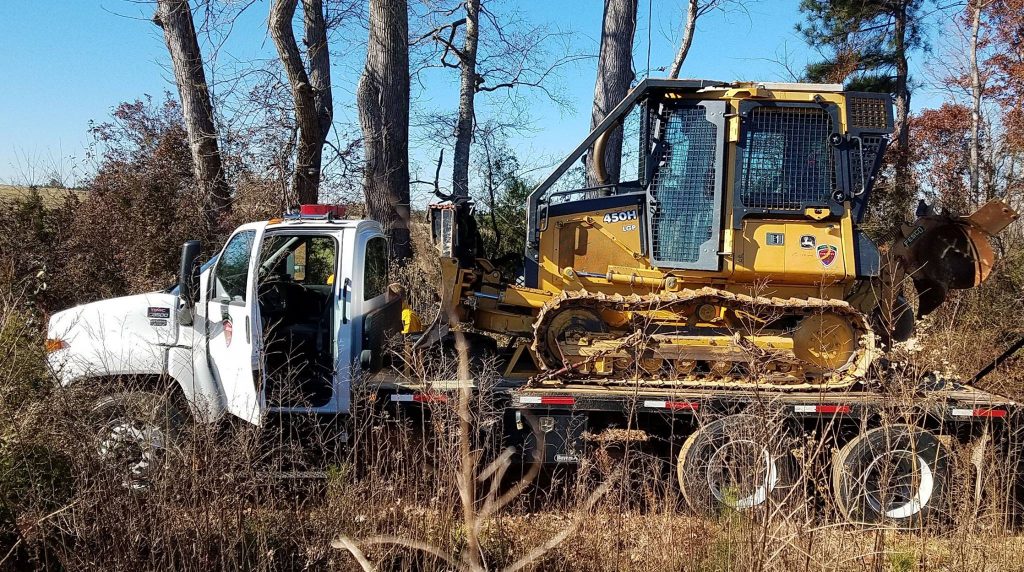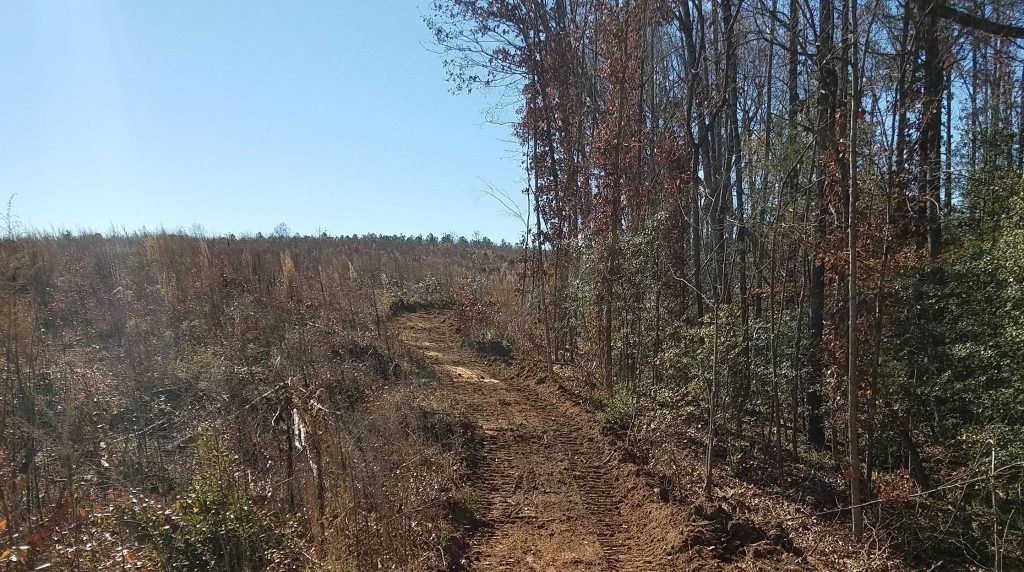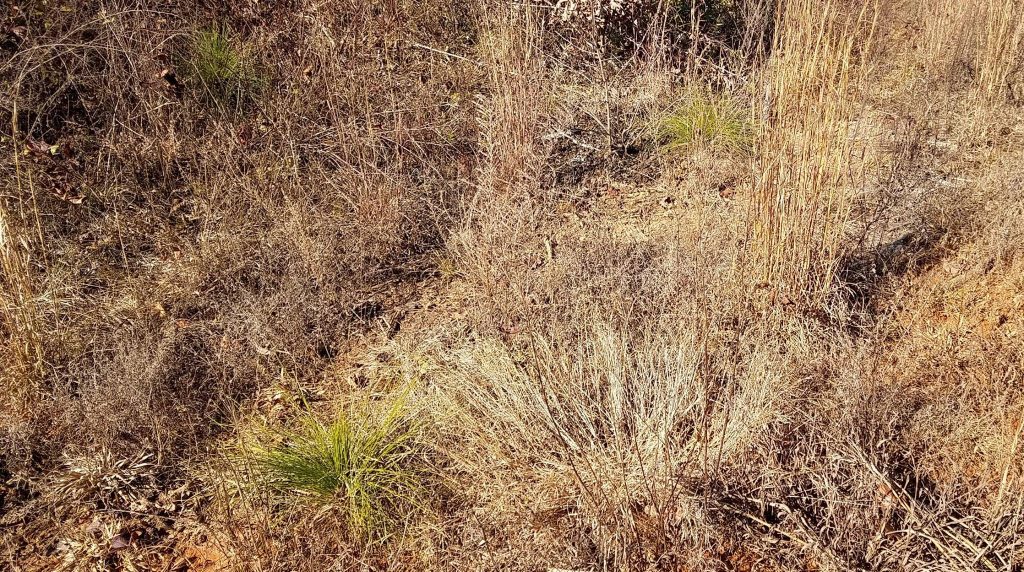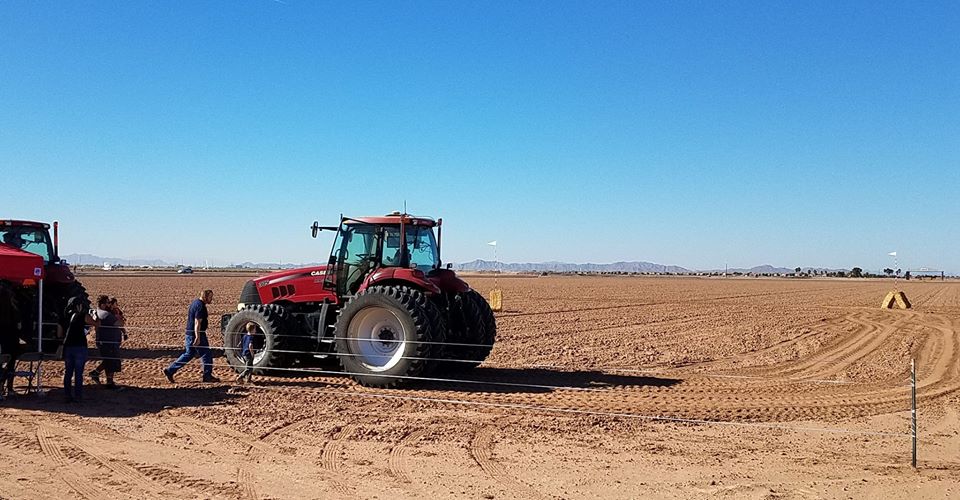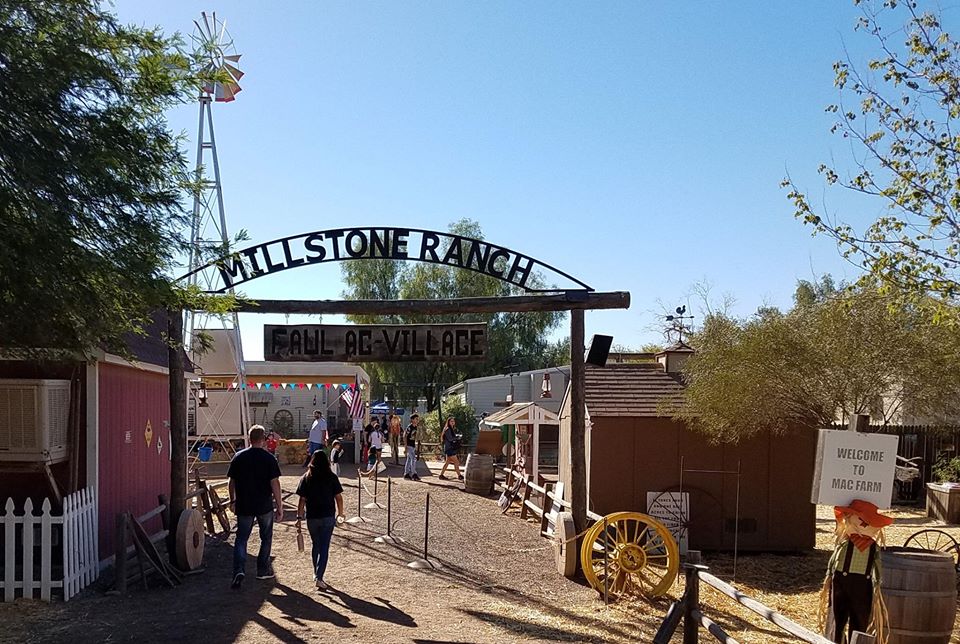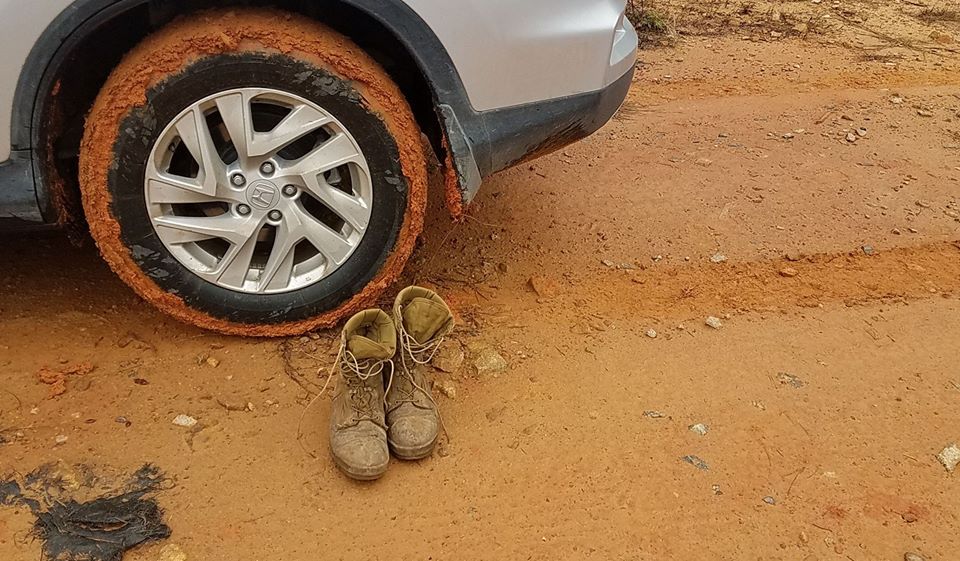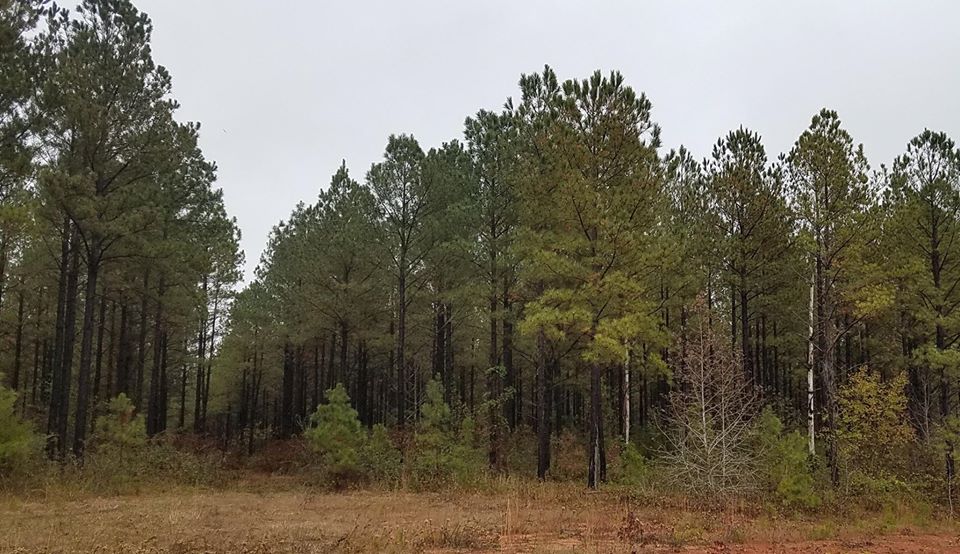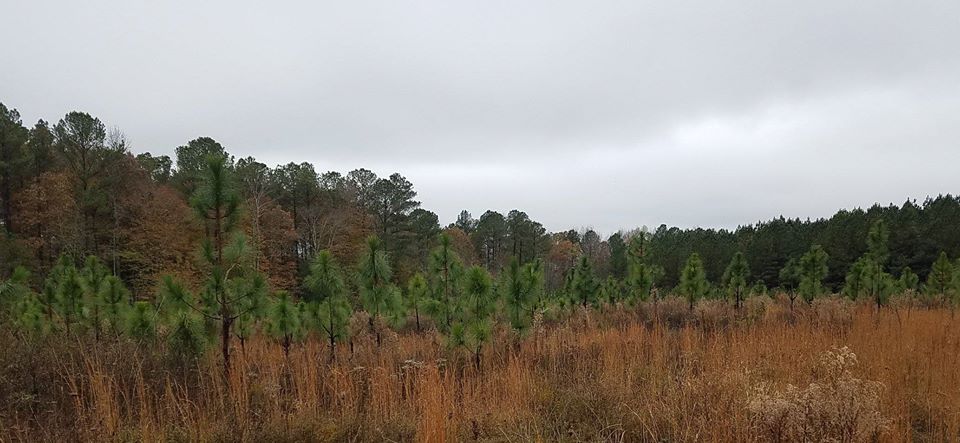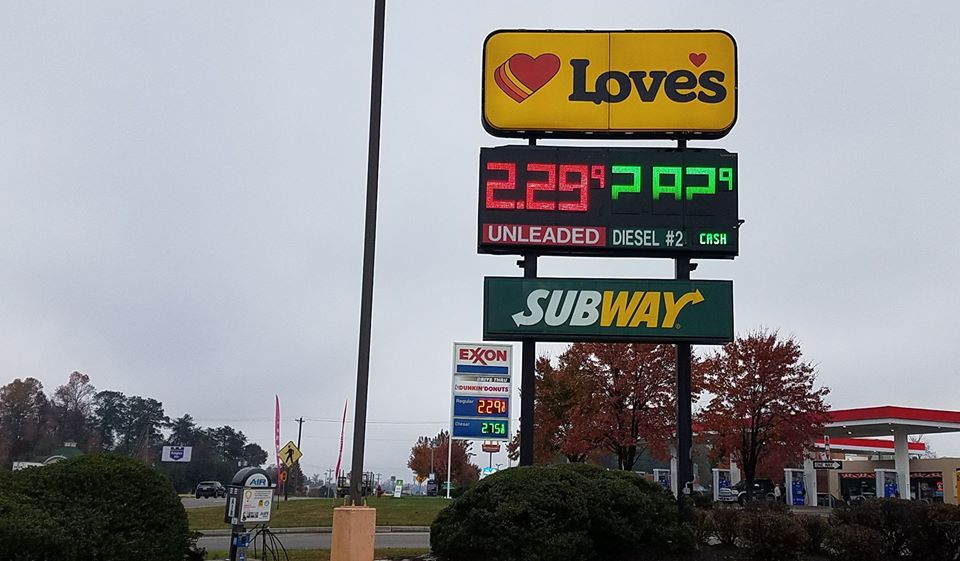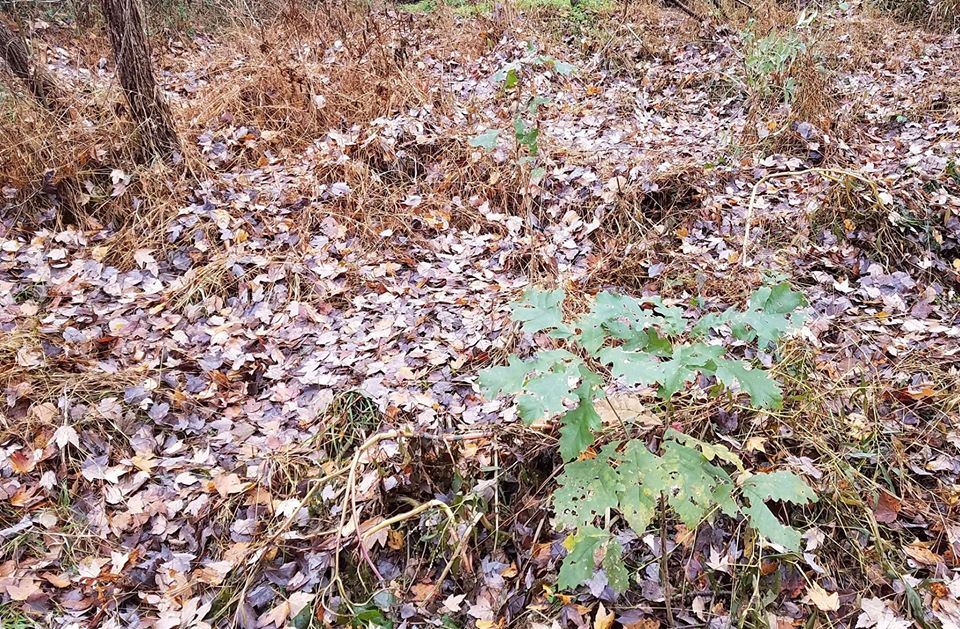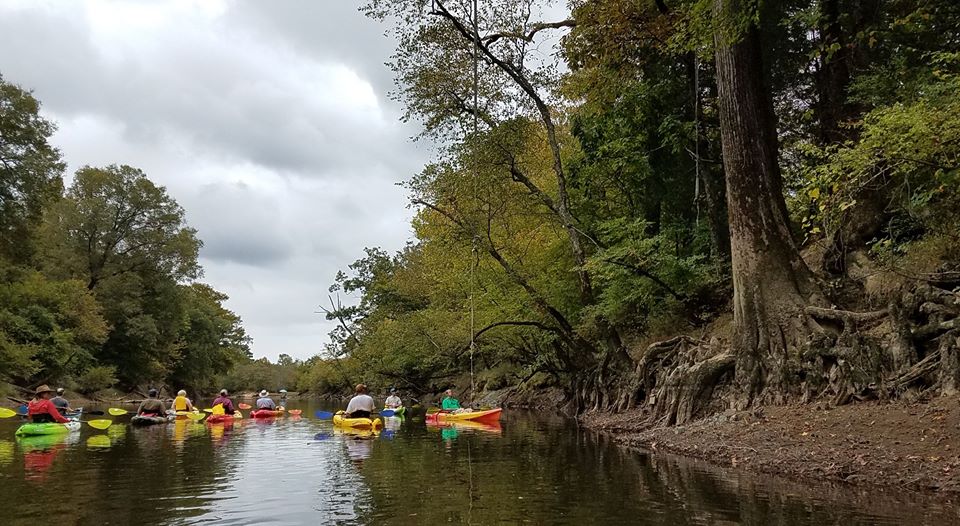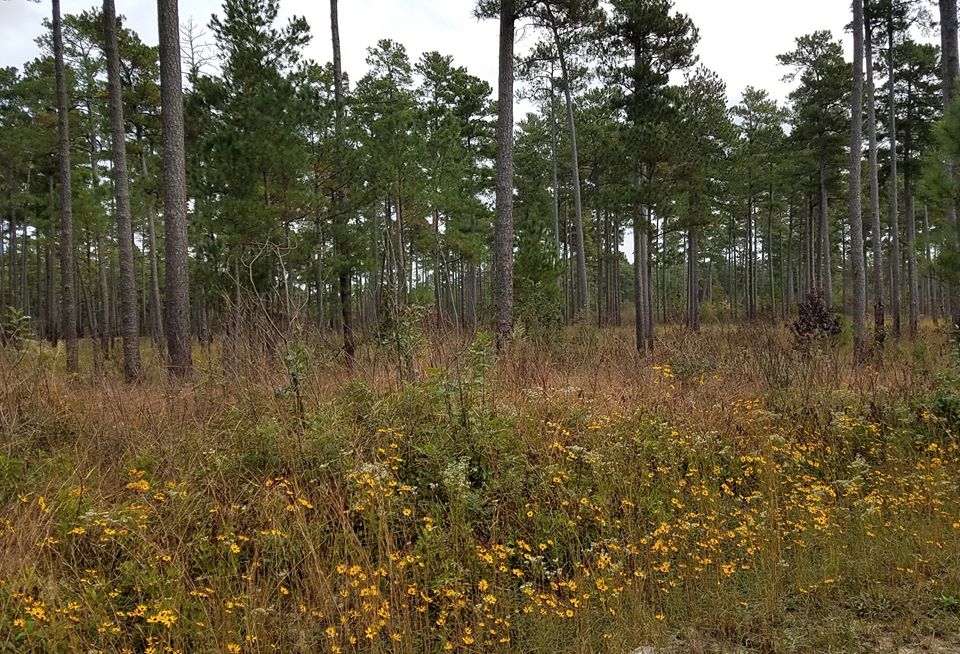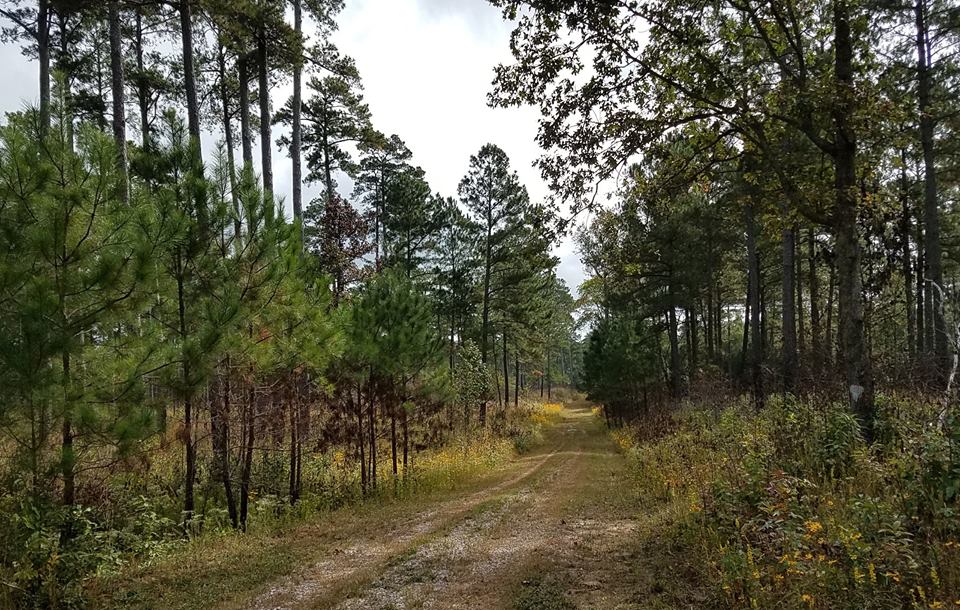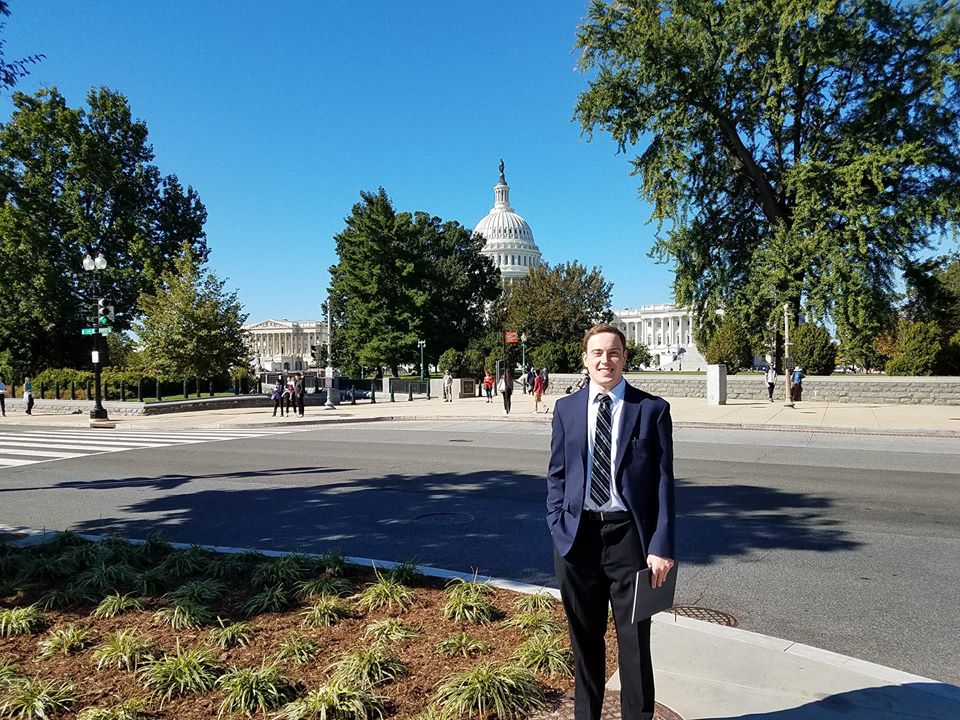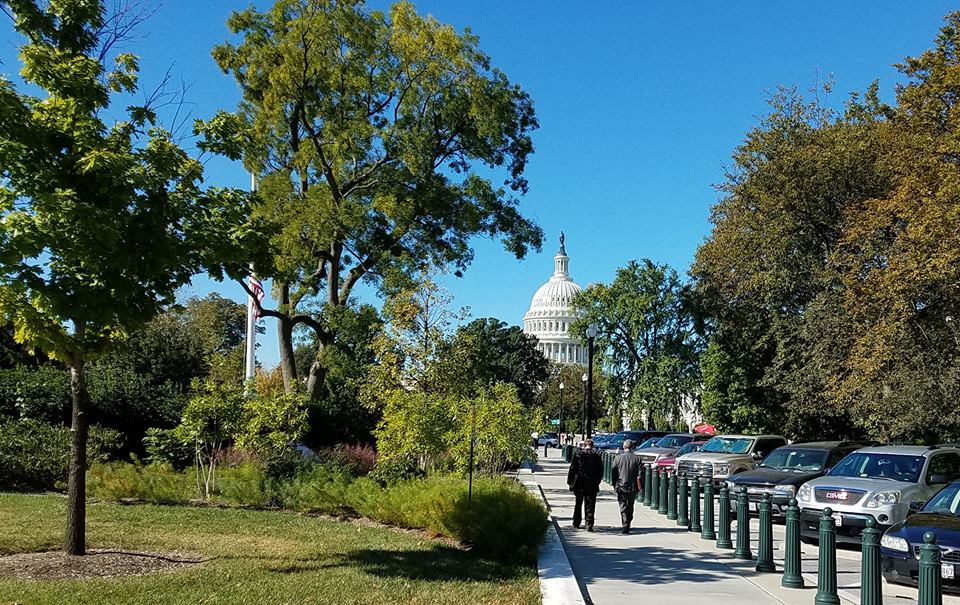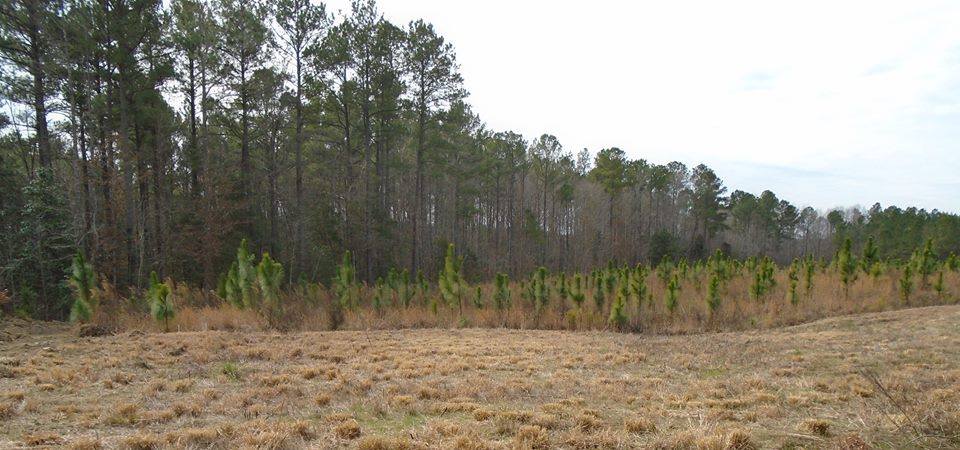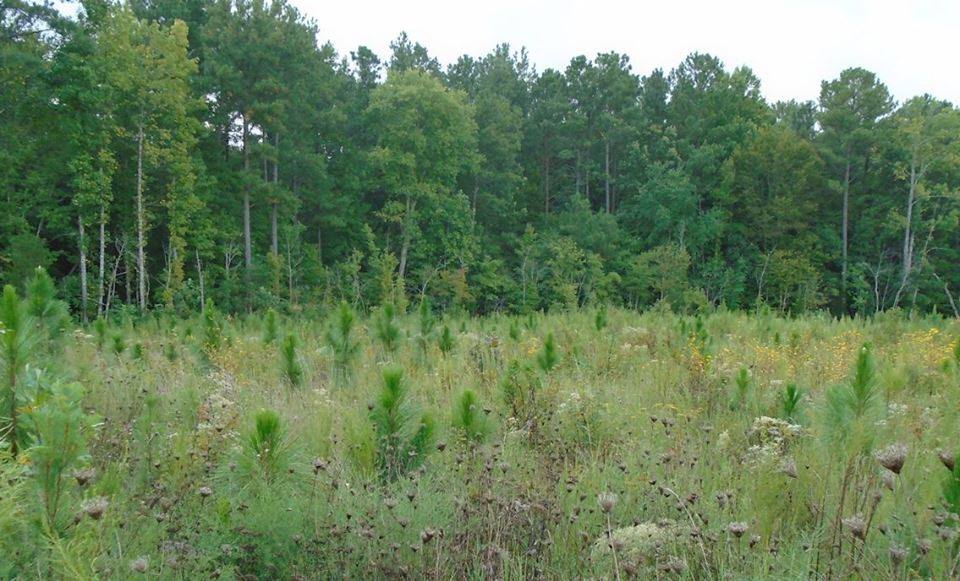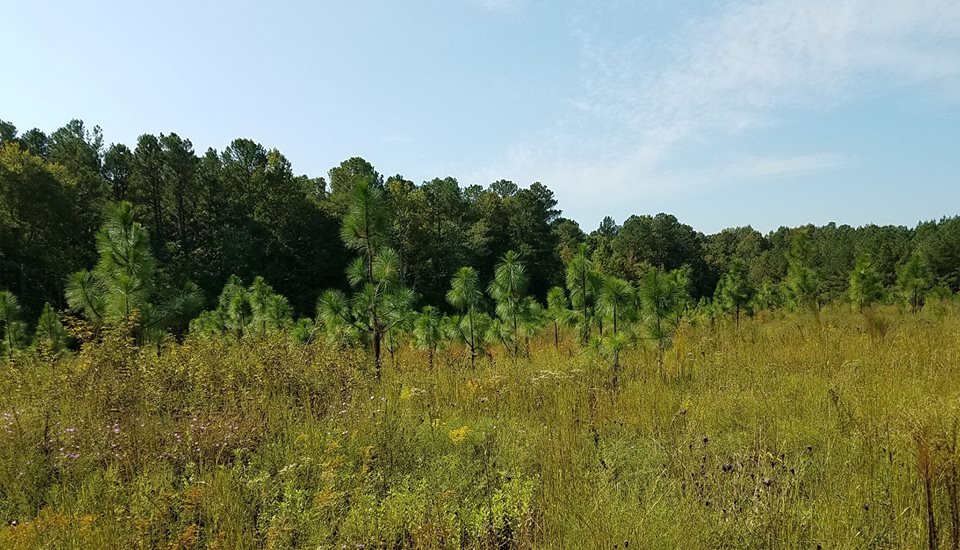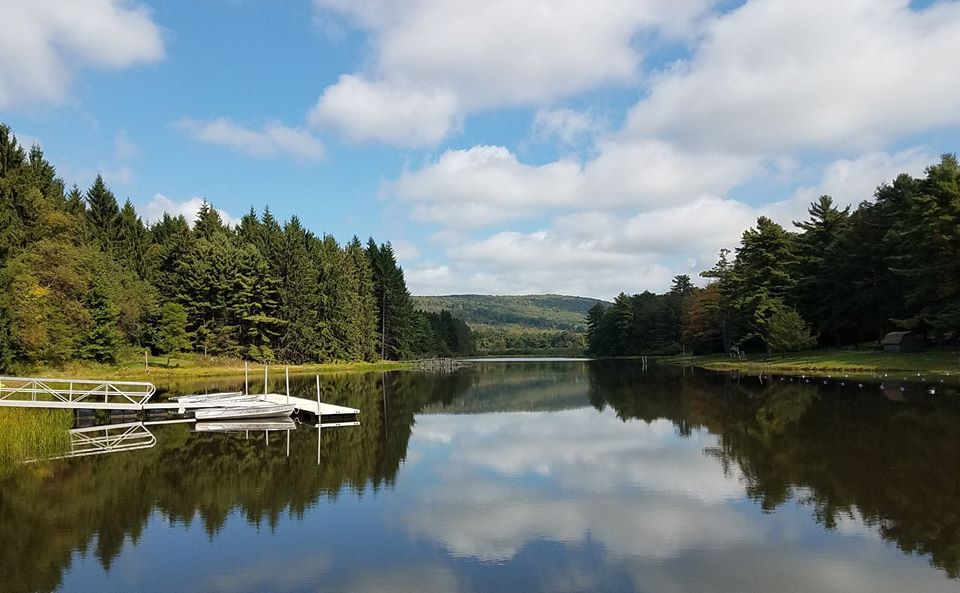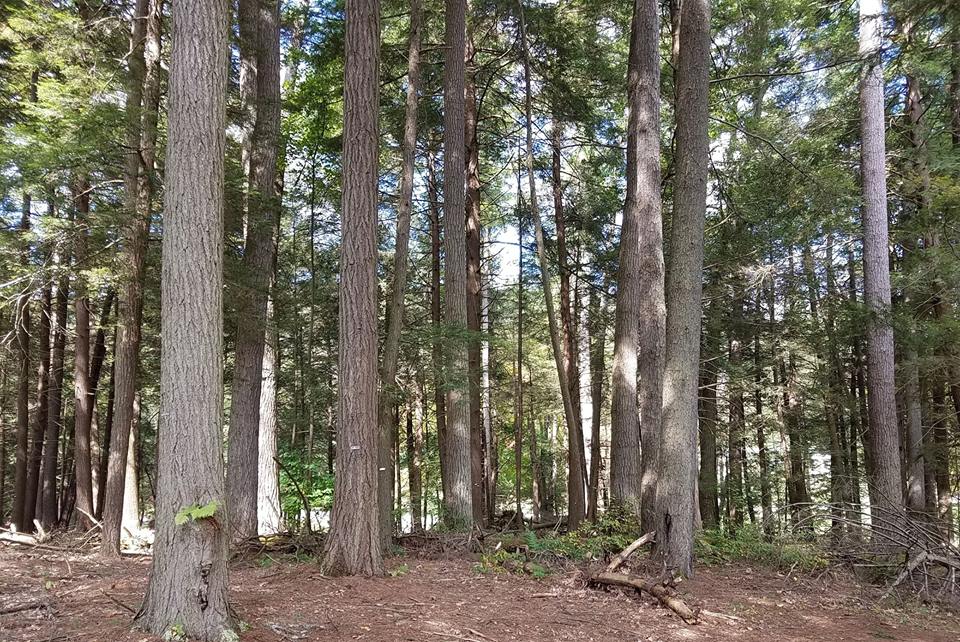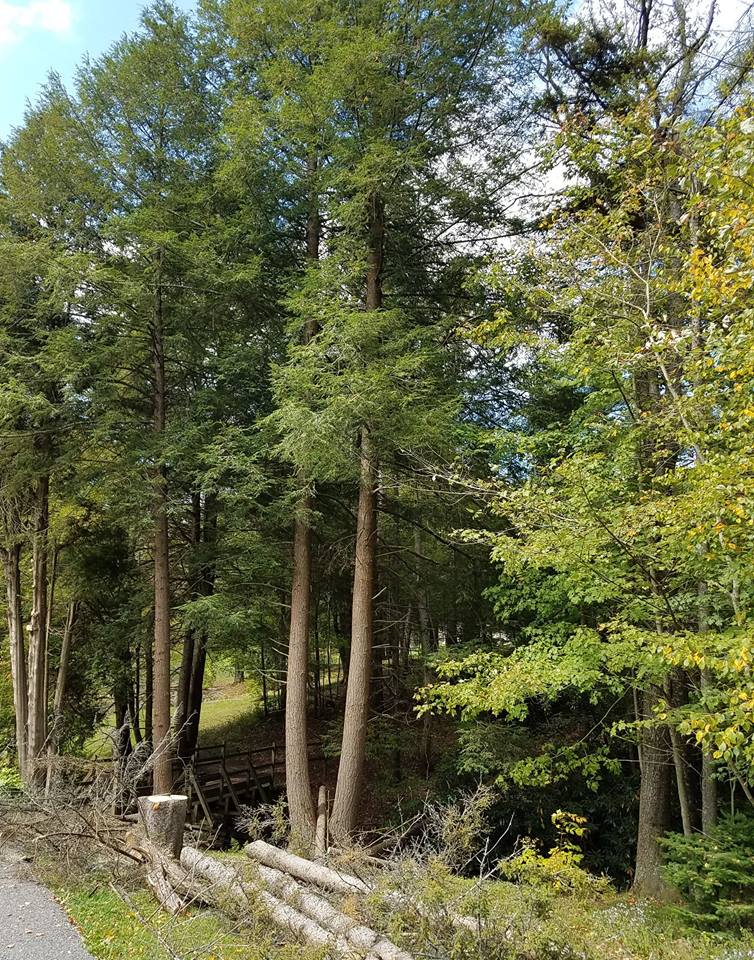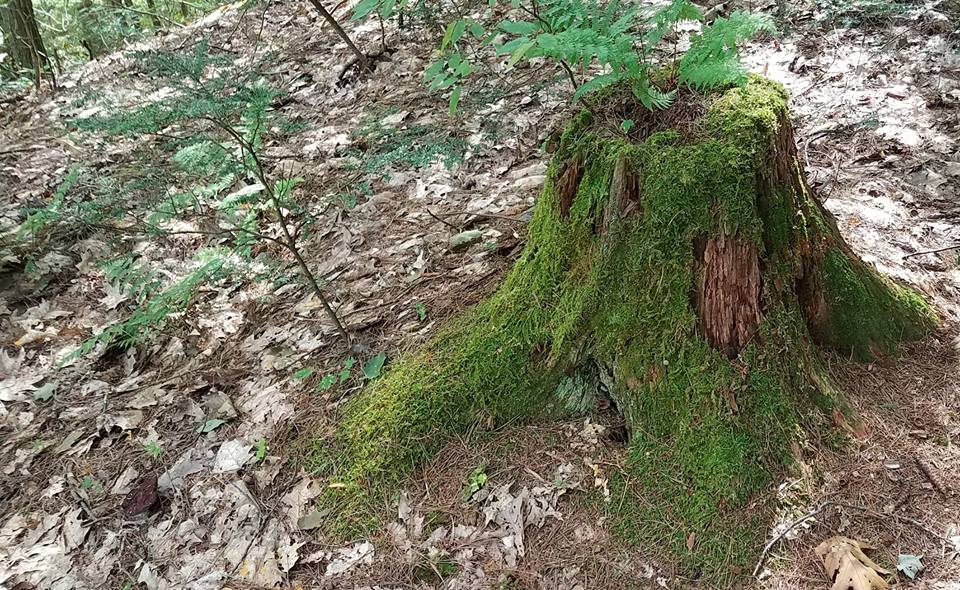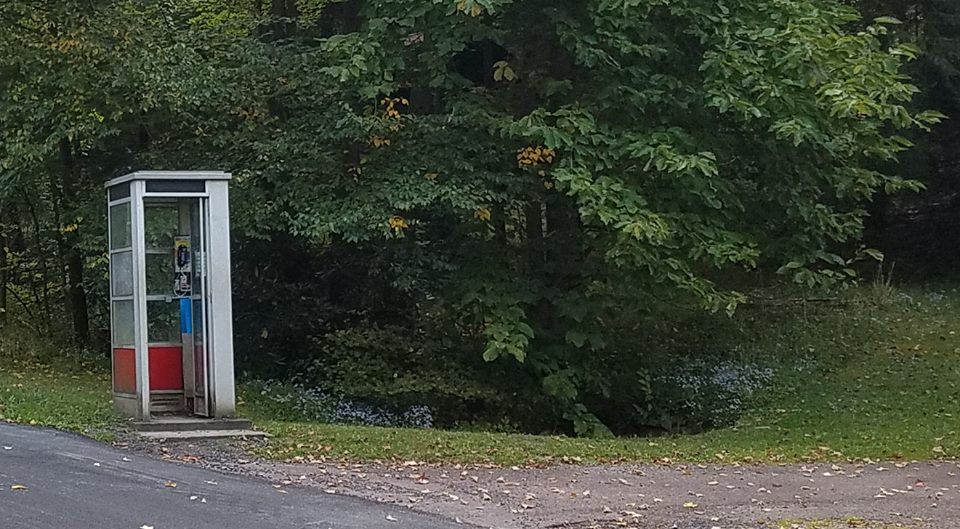January 01, 2018
Resolved to make notes every day plus find previous notes and post.
No matter how prosaic, every day.
This new years day I worked on my presentation for the Tree Farm Leadership Conference at end of the month. the going is slow. I am making slides for the 50 minute presentation. I have too many things to write and cannot make it fit.
It was very cold today, the kind of day when the wind hurts.
Went to the gym today and ran on the machine for around 30 minutes or 500 calories, while watching “the Great Courses” on Turning Points in Middle Eastern History.
Had Digiorno pizza for both lunch and supper, leftover the second time.
January 01, 2014
Stickin it to the Man
I have been complaining about how independent-minded people cannot get along in the big bureaucratic organizations as long as I have been working in big-bureaucratic organizations. It is getting to thirty years now and I have been getting along reasonable well in big-bureaucratic organizations. For an even longer time, I have been reading books about independent-minded reformers bucking the system to change the paradigms and make meaningful changes.
I always identified with the plucky outsiders. Most of us do. It is the American way. You can easily see it in the plots of so many movies and books. A group of misfits is picked on and oppressed by the powerful and/or popular people. They continue to do things their way and by the end of the movie are vindicated. As I said, most of us identify with the underdogs and misfits.
It can’t be right. There are more than 300 million Americans and ALL of us are rebels? If all of us are a little different and a little rebellious, who are we rebelling against? And if the group of misfits comes out on top, don’t they become the in-group. Maybe it is the nerds and the theater kids oppressing the jocks.
I have been reading another of those business-management-behavior books that gives another set of examples about the rebels working on their own turning the tables on the established and powerful. But, as I wrote, I have been reading these sorts of books for a long time. The names are changed and the exact circumstances are different, but the stories are the same. My study of old books tells me that this story has been going on for as long as people could write. Each of the new renditions makes it seem like it is a new discovery, but maybe this is just the way it is, has been and ever will be.
In my own lifetime, I have seen many of “rebels” turn into the establishment that needs to be overturned by new rebels. These erstwhile rebels in general did not “sell out.” They simply solved the problems presented them. Yesterday’s solutions are often today’s problem, which implies that today’s solutions will be tomorrow’s problems. This seems depressing at first glance and it could be, but I don’t think it is. It is simply a matter of growth and change.
Many of the problems of my youth have indeed been solved and the world is generally a much better place than it was back in 1973. Our generation actually did pretty well. I have reasonable confidence that it will be a better place in 2053 than it is today, i.e. the kids will be all right too. But people will still complain, because people complain. We can always imagine better.
I have been complaining about how hard it is for independent-minded folks like me to make it in the organization. People like me like to “stick it to the man.” But in the course of all my complaining, suffering and strife, I realize now that I have become the man, or at least one of them. People see me like I saw my bosses of the past. I now understand that my old bosses too were surprised by their own apotheosis or demonization, depending on who was doing the taking and when. These successful folks were – in their own minds – the plucky outsiders who had to push open doors and make the system change. Some were right.
It is a little deflating but nevertheless comforting to realize that we – we plucky outsiders – we are the system, maybe too much to say bricks in the wall but not too much to say links in a chain. It is a great strength of our American system that we can easily absorb good people and ideas from outside the current establishment. We actually live in a state of constant revolution, but w/o the nasty bits associated with those things that happened in France or Russia.
It doesn’t work in spite of us but because of us. We “rebels” sometimes don’t admit it or even see it. The system works with us and we work with it. The energy of our discontent is part of its lifeblood. We never get all we think possible because we can envision better than anyone can achieve and it is a moving target. As soon as we get to a place we thought impossible, we start thinking it is normal, deserved and maybe not enough.
Well, looking around on this first day of 2014, I see that things are pretty good. Can I envision better? Of course I can. Is it better than I envisioned by in 1974? Hell yeah. We solved the energy crisis, brought down world communism, reduced absolute poverty by 80%, cut cancer deaths, greatly improved water and air quality, brought back species such as wolves & eagles; the population bomb fizzled; Lake Erie turned out not to be dead and we even got rid of disco & leisure suits. Those were things I worried about back then, I thought there were no good solutions; fortunately, I was wrong.
And still can stick it to the man. Take a look at this clip.
d by Broadnax at 08:42 AM | Permalink | Comments (0)
January 01, 2012
How Violence Has Declined & Why we Didn’t Notice
Stephen Pinker is my favorite living philosopher of society. Some would correct me and say that he is a scientist and not a philosopher, but the two can overlap extensively. With all due respect to the ancient philosophers that I read and loved, many of the questions that perturbed them are now just “simple” matters of science. For example, philosophers argued back and forth for years as to whether humans were “blank slates” influenced only by their environments or whether they were determined by physical or genetic factors. Recent advances in science have made this argument mute.
People are born pre-programed. A variety of talents, abilities, habits are inherited to some extent. On the other hand, within these constraints human behavior and preferences are highly mutable. (Science proved what any perceptive parent of more than one child already knew.) I take this to mean that you can have a lot of freedom to change things if you recognize and work with nature, its gifts and constraints.
That is what I liked about Steven Pinker’s book the Blank Slate when I read it about ten years ago. At first you might feel a little discouraged. Pinker points out that human propensity to violence, intolerance & sloth were bred into us during evolution. Humans of the stone age who didn’t react quickly and violently to threats didn’t usually live long enough to become our ancestors. The good news is that institutions of civilization and social constraints can (and have) made us behave in ways that are – well – more civilized and socially acceptable.
I just started reading Pinker’s recent book, the Better Angels of our Nature: Why Violence has Declined. I suppose that good intellectual rigor would dictate that I actually finish the book before commenting on the ideas, but I have read several reviews and I just finished reading an interview with the author in Veja that got me thinking about this. There is a good recent interview here. The best quick background is Pinker’s TED talk. (BTW – TED lecture are really interesting in general.)
Pinker studied statistics on violent deaths. Of course, there are no statistics on Stone Age people in the actual Stone Age, but it is possible to study more modern Stone Age people. It turns out that murder rates among primitive people about which we have records are astronomical. It is a myth that people were good and later corrupted by civilization. Civilization civilizes, and it is better than the alternative “natural man.”
Historical records are spotty at first, but it is clear that life was much more dangerous and violent in any ancient or medieval period we study. Death was a penalty for all sorts of minor crimes. And was often inflicted in the cruelest way possible. Torture was common. Entertainments were cruel and bloody. But things improved, at least in the west.
Despite the great wars and murder on an industrial scale, the 20th Century has been the least violent in history. Of course, more total numbers of people have been killed, but that is because there are more total people. The proportions are way down.
Most people can vouch for this, if they think about it for even a short time. It is only in recent times that most of the population could expect to live a long-life w/o ever being the victim of the deadly violence that was common to all humankind in the past.
Pinker has to take a lot of crap for pointing out the truth. One reason is simply because most people like to think they live in the most challenging times. Beyond that, we have much better reporting. If a couple people are killed in nasty ways anywhere in the country and increasingly the world, we get graphic and memorable details on the news.
A counterintuitive reason might be that things are actually improving so quickly that it makes the remaining problems seem that much worse. We repent much more sorrowfully the fewer acts of terrible violence because they seem more personal. “The death of one man is a tragedy; the death of a million is a statistic,” is as quote attributed to Stalin, who understood how to kill individuals and millions. It is nasty, but perhaps accurate. We get inured to lots of violence and more afraid of a little.
Pinker also has to face what we might call the miserly industry. Politicians selling programs and NGOs seeking donations need to paint the in the direst colors. Pinker is a brave man to take this on.
Of course, why violence has declines is important. What goes down in human behavior could go back up. Pinker does not think the explanation is that humans have improved, or human nature has changed. He is too much a scientist to think these things. He does not try to make a comprehensive explanation, but he mentions some possibilities. The first is the rise of stable states. He doesn’t use the word strong, but prefers competent in the sense of keeping order and satisfying the basic needs of its people. Competent states must be strong, but not all strong states are competent. Nazis & communists had strong states.
Another explanation is free trade. In one of the interviews, Pinker quoted that “we can’t bomb the Japanese because they make my minivan.” Free trade goes with communications. The more we see people are being like us, the less likely we can treat them as sub-human.
We may be less violent because there is less incentive. Hunter-gatherers are always ready for violence. They sometimes commit violence because they fear violence from others and sometimes just to rip off their neighbors, which is one reason everybody fears violence from others. War used to be profitable, at least for the winners. Not so much anymore. Finally, there is a prosaic reason of habit. Many of us have lost the habit of using violent solutions.
I don’t think violence or war will ever go away, but we have seen less of it. I have never been a victim of serious violence. I felt it personally when Alex was a hate crime victim. This is the kind of senseless thing you cannot purge. His attackers didn’t know him or try to rob him. They merely acted out of the dark demons of human nature. I saw war in Iraq and like many observers, I was stuck by the banality of violence. I saw violence drop not because of persuasion but mostly because the Marines and our Iraqi allies established predictable order.
Violence and disorder always lurks under our veneer of civilization. The threat never is gone. We have to work all the time to channel the primitive passions and animal desires. I say “channel” not suppress. These impulses are sources of our energy and creativity. The uncivilized human is not evil or sinful, as was widely thought in some religious circles, but neither is there any such thing as a noble savage. Both these notions have caused great misery, as have the ideas that human behavior is determined by genetics or that humans are blank slates on to which society can stamp any design.
Life provides us with a never-ending series of constrained choices. It is certainly not true that anything is possible, but making good choices can expand our contentment as well as our ability to make more good choices. Some human problems are intractable, and some “problems” are not really problems in the sense that they cannot be solved. If we ask the wrong questions, we will come up with the wrong answers. We will never achieve a society where everybody is equal because people are not equal. We will never achieve a society w/o violence because people have propensity to selfishness which sometimes leads to violence.
But if we recognize constraints, we can achieve better results. “Going back” to a more primitive society is not an option. It would add to misery. Life was nasty, brutish and short in earlier periods. Going “forward” to a utopia is also not possible. Life is actually pretty good for most people in our Western market democracies and it is getting better for those in the developing world. Maybe we will just have to manage with what we have.
Posted by Broadnax at 11:18 PM | Permalink | Comments (0)
January 01, 2011
Bean Soup
My father subsisted on pea soup and bean soup, more or less, for the last twenty years of his life, those things plus some Polish sausage and almost ripe tomatoes. Making them is easy and cheap. The biggest challenge is remembering to soak the beans/peas overnight. You can use leftover ham as a base, or the parts of the ham that you didn’t want to eat because they were too fat or too hard to pick off the bone. You can see why this is such a wonderful peasant food. It stays good for a long time. In fact, it improves with age. Nothing is wasted. You can also toss in whatever vegetables were laying around. It all turns into a kind of thick gruel that tastes pretty good if you put in a little pepper and salt.
I don’t make these soups as much as I did when I was in college. Back in college pea soup and bean soup were among the foods that had the three attributes I craved: they were cheap, reasonably nutritious and I could make them. That is probably why my father ate them all the time too. But my kids don’t like either, so they cannot form the basis of a family meal. As I recall, I didn’t like them either when I was a kid. I learned to like them when I was in college. No doubt under my father’s influence, I made it from scratch, the less expensive and better way, rather than buying the pre-made stuff in cans.
You can get pea soup at some nice restaurants, but it is kind of a specialty not common most places.
We had ham for supper and we have ham bone left over, so today I made bean soup. In a couple of days, I will make some pea soup with what still will be left of the ham. This week, we will dine like the old man taught me.
Oh yeah, he used to make cabbage soup too. I haven’t made that for a long time. No matter how much of this kind of food you try to eat, you really cannot get fat on it. These kinds of food fill you up before they can fill you out – the original diet food.
Posted by Broadnax at 02:52 PM | Permalink | Comments (3)
roadnax at 05:37 PM | Permalink | Comments (6)
January 01, 2009
Unity & Sweet Liberty
We will never again be as united as we were in 1965. It was a time of an unusual confluence of factors. The older generations had the unifying experiences of the Great Depression, New Deal and World War II. Think of what those things did. Millions of young men and women came together in a common cause such as the CCC in the 1930s and the military in the 1940s. Never before and never since have so many people shared such intimate similar life-changing experiences.

They and the younger generation were further tied together (homogenized) by the miracle of television. The limited choice among TV channels ensured that large percentages of the population watched the same things at the same times. (Not many baby boomers know words to the “Star Spangled Banner” but most can sing the theme song to “Gilligan’s Island.”) America had also had successfully digested the waves of immigrations that hit our shores in the early 20th Century. Immigration restrictions and the Great Depression had limited new immigration and so America has a smaller percentage of immigrants among its population than at any other time in its history. Other “unity” things were also strong. Church attendance was very high. Most adult males had connections to the VFW. Membership in industrial and trade unions has never been higher. It seemed a golden age for the “ordinary guy.”

American dominance of the world was unique. We bounced out of the Depression after WWII at a time when most of the other world economies were in ruins. At some points, the U.S. produced around half of ALL the world’s production. Nothing like like that had ever been possible before and is unlikely to ever happen again anywhere. It resulted from the perfect storm of industrialization, depression and war. Communist domination of large parts of the world ensured that many places remained uncompetitive and backward for longer than necessary. Speaking of communism, we cannot forget the Cold War. The threat of nuclear annihilation focused the minds of those generations and facing a benighted, yet dangerous enemy together leads to shared identify.
When we look back at the two decades after WWII, we sometimes see stifling conformity and we unavoidably cast our glance forward to the divisive and challenging times to come. But we still look l back to the lost feelings of comfort and community and imagine how we could recreate it along with today’s diversity and options for individual expression. This is an impossible dream.

Above is Union Station in Washington DC. Such self-conscious permanence in public building is less common now.
First of all, the conditions that created the post-war unity were unique. They cannot be recreated and nobody would advocate going through the suffering of depression, war and totalitarian threats to try to foster the preconditions. Periods of growth following challenging ordeals are often pleasant, but you might not want to throw yourself into a pool of ice water just to feel the pleasure of warming up again.
But most important is that we don’t want it. Unity and diversity are both good things, but they are in tension. As in those economics curves, there is a point where you can maximize both, but you do have to trade them off against each other. We have chosen less unity than we used to want back in 1965. This has implications.
More choice creates more innovation and economic growth. But making reasonable predictions about the future becomes harder. It also complicates provision of insurance & welfare benefits, as diversity lessens trust. In a homogenous community, people understand each other. Homogeneous communities are also usually relatively small, so people can monitor and balance abuses. They are reasonably certain that their social outlays are, if not well spent, at least decently targeted. It is no coincidence that the most successful welfare states are/were in homogeneous Scandinavian countries and that they have begun to breakdown in the face of globalization and immigration of new and different people.
 Talking about a “caring” (i.e. one that takes care of you as an individual) government in a place as big and diverse as the U.S. is an oxymoron. We gave that possibility up long ago and we should stop pretending that is what we want. Our choices have made that impossible. What we have demonstrated we want through the choices we have made is a government that ensures reasonable justice and the rule of law, provides for the common defense and provides options. If you want to put this into more beautiful language you might say, “… in order to form a more perfect union, establish justice, insure domestic tranquility, provide for the common defense, promote the general welfare, and secure the blessings of liberty to ourselves and our posterity …” it is astonishing how long that formula has remained viable.
Talking about a “caring” (i.e. one that takes care of you as an individual) government in a place as big and diverse as the U.S. is an oxymoron. We gave that possibility up long ago and we should stop pretending that is what we want. Our choices have made that impossible. What we have demonstrated we want through the choices we have made is a government that ensures reasonable justice and the rule of law, provides for the common defense and provides options. If you want to put this into more beautiful language you might say, “… in order to form a more perfect union, establish justice, insure domestic tranquility, provide for the common defense, promote the general welfare, and secure the blessings of liberty to ourselves and our posterity …” it is astonishing how long that formula has remained viable.
So in this new year when it looks like we will be asking a lot from our government, we should pause to remember that we should not ask too much, and it is not only because we should ask not what our country can do for us, but ask what we can do for our country. Let’s not grab for that remembered unity that we never can recreate or ask for guarantees of prosperity that nobody can provide. If you give government the power to grant all your wishes, you also give it the power to take them away. It is tempting to trade liberty for security, but w/o liberty sustained security is impossible.
Happy 2009!
Posted by Broadnax at 07:57 AM | Permalink | Comments (0)
Burn prep
Went down to the farms to talk with Virginia DoF’s Adam Smith about burning the longleaf and under the first set of loblolly on the Brodnax place. I described the plan to patch burn in other posts.
The weather offers a window tomorrow. DoF was over today to freshen the fire lines. We will set off the fires tomorrow around 11am. Predictions are for a warm and dry day. Relative humidity will be lower by mid-day and the dew will have evaporated. It is supposed to be wetter by evening, maybe even rain, so this is a good window.
The topography on Brodnax is a little hillier than on Freeman. Fire burns up hill much faster than on flat, since the oncoming flames can heat and dry ahead of them. The fire lines are around nine feet wide, which should be more than enough to contain the fires.
Anyway, I am in Emporia tonight and looking forward to being on the Brodnax place tomorrow at around 9 am. We hope to be done by dark. I will take pictures and video if I can. This is not always so easy to do, however, since being in the middle of moving fires has a way of making pictures harder to take.
The trick here is to set strips of fire so that it doesn’t get too hot. We want to burn the brush but leave the longleaf. They are still in the grass stage, so the fire should pass harmlessly over them, as long as it does not linger too long. We want a “flash fire.”
Under the loblolly we are going after the brush and fuels. This is a fuel reduction fire plus a brush control. The trees are far apart, with a basal area of around 50. This will let the heat and smoke of the fire rise and dissipate. If the trees were closer together and the canopy more closed, the fire might get hotter and smokier.
These are the theories at least. Tomorrow night I will write about what really happened.
My first picture is my usual Love’s photo. Gas prices are rising. Next is the DoF dozer they used for the fire lines today. After that is one of the fire lines. On the forth picture you can see some of the little pines. They were obscured by the vegetation before and I was a little afraid that they were not there. They are looking good. I think they have sent down their deep tap roots and after the fires will do just fine. Last picture is the land ready to burn.
Maricopa Agriculture Center
Visited the MAC (Maricopa Agriculture Center) today.
We saw some tractors that run on GPS. People could ride in the driverless vehicles to show how it was done.
Another interesting thing was a mechanical cotton picker. This is not a new invention. It was developed over a couple decades in the starting in the 1920s by John Rust with the later help of his brother Mack Rust. It was a kind of Wright Brothers thing. These guys just worked and improved until they got it right.
The Rust brothers grew up on a farm and picked cotton as kids. It was an unpleasant task, so John was always thinking of how it could be done by machines. Problem was that cotton comes in fiber balls, not like corn or grain. He remembered how the cotton stuck to his hands on wet days, and water is the secret of the cotton picker. It has rotating screws that are kept wet. They pull the cotton off the plant and it sticks because of the water until it is brushed off.
The machine they showed us is a relatively old and small model. It can pick 9,000 pounds a day. There are some that can do 90,000. In comparison, a reasonably fast human picker can do only around 400 pounds a day. That means that the big machines replace more than 200 field workers. This was not welcome everywhere. Since it would replace so many workers, some feared disruption and social upheaval. Besides, labor was cheap and there was a lot of it available during the Great Depression so not much interest in financing the machines.
The Rust brothers eventually did make good. Commercially viable models came out after World War II, and they soon transformed the fields of the South and West. Today, the only cotton not picked by machines in America is in a few very small experimental fields, too small for machines. Even in developing countries, where labor is still very cheap, the machines are taking over.
I wondered why mechanical cotton pickers were not developed earlier. After all, mechanical reapers for grain were developed in the 1830s, a century before the cotton pickers, and widespread within decades. The difference was probably in the type of labor employed harvesting. Grain was grown everywhere in the USA, but the big producers were in the Midwest and on the plains, grown by farmers who owned their land and/or employed free labor. For a long time, cotton was grown only in the South and by slave labor and later where labor was less mobile, less free.
Adam Smith argued that slave labor was inherently inefficient and he was right. Even setting aside the really big moral issues, free labor is in the long run better and progress is hastened when free people can innovate and benefit from the innovations. The cotton picker might have come around about the same time as the mechanical reaper, had the labor system been different.
November on the farms
The weather man promised sun and pleasant weather by the middle of the day. He was mistaken. It was wet and muddy at the farms.
I walked through the longleaf. Most survived the fire and they are thriving. I noticed some fairly big holes in the plantation. It seems they are mostly in places were the brambles were very thick. I think they may have killed off the little pines. I thought about an alternative explanation, that maybe the planting crew avoided the brambles, but we had burned before planting, so the brambles were not there. Of course, maybe it was something else entirely.
The fire killed a large number of loblolly in their section. I may inter-plant some longleaf there and in the empty spots, but maybe not until next year. I think we will burn again in late 2018 for the general longleaf planting among the loblolly that I will thin to 50 BA plus make the patches. Easier to plant then.
I also noticed a few shorleaf pine that came back after the fire. Shortleaf are also fire adapted. I am letting them grow. Shortleaf don’t get the respect they deserve.
The fire had a few effects besides cleaning out much of the brush. I noticed a lot of double leaders. I think the fire may have affected this, but I am not sure. I lopped off a maybe twenty double leaders. Some of the trees also developed long and almost horizontal lateral branches. I lopped many of them off too, since I fear that an ice storm would weight them down and maybe bend the trees beyond recovery. I don’t know if I am doing the right things, but it seems right.
My first picture shows my boots. The Marines gave them to me in Iraq and they are still good. I wore them every day for the year I was in Iraq, but I now use them only on the farms, so I suppose that is one reason why they are lasting so long. The Freeman farm (with the longleaf) is also related to Iraq, in that I used some of what I made there (danger pay etc) to buy this land. Next picture shows the usual longleaf panorama. They are easier to see now that the grass is yellow. After that is the Freeman lobolly that we are going to thin early next year. Next is my usual Love’s photo, prices are higher. Finally are a couple of the bur oak Espen & I planted last spring. They are just for fun. Bur oaks are cool.
Islands in the Sky
Sky islands are communities of plants & animals in places like Arizona characteristic of more northern ecologies. Altitude substitutes for latitude. They are remnant populations, surviving from a time when the earth was much cooler during the most recent ice age. As the earth started to warm about 10,000 years ago, these cooler-adapted communities moved up the mountains. They are like islands because they are surrounded by scrub or desert. That makes them precious and vulnerable, since they are unconnected to other islands or to the larger populations of their similar species, i.e. from seed/genetic banks to regenerate if a population was extirpated locally. It also makes them extremely interesting, since you can essentially go through biomes from hot desert to something like Canada by walking up hill and they provide lessons for adaption when climates change.

We came to the sky island at Ramsey Canyon to see Apache pine, pictured above. I learned that Apache pine have an ecology kind of like longleaf and kind of like ponderosa. Since I love both those species, I wanted to get to know these too. Apache pine are mostly present in Mexico’s Sierra Madre. They extend into the USA in parts of New Mexico and Arizona on patches like Ramsey Canyon. The Nature Conservancy owns a the preserve at Ramsey Canyon. I asked if I could talk to the steward of the place, and Eric Anderson was good enough to spend the morning with us, explaining the unique ecology of this part of Arizona. Eric and I are pictured below.
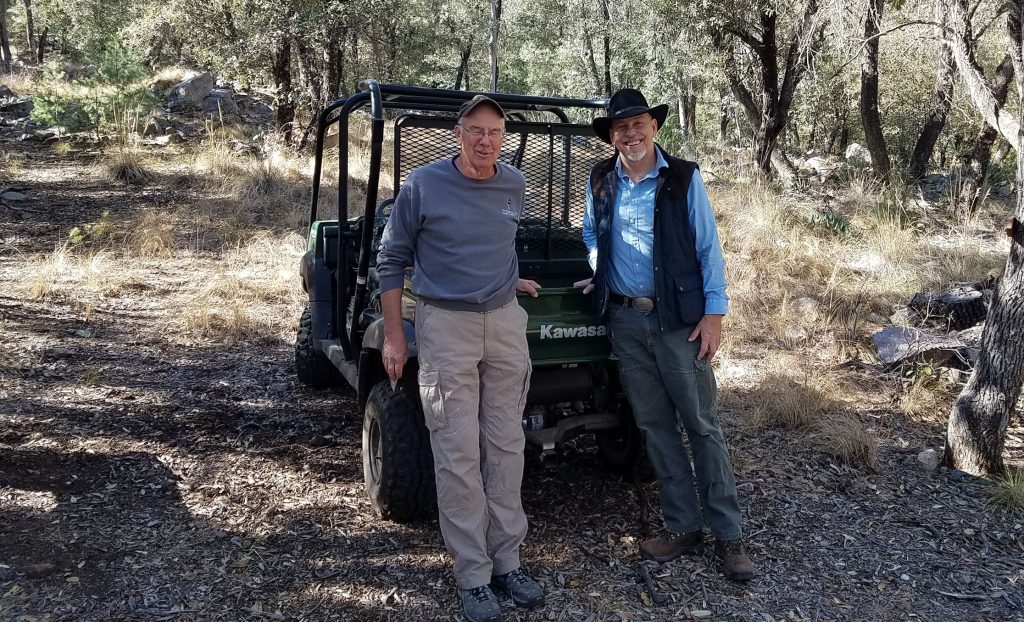
Ramsey Canyon sits at the nexus of four disparate biomes. To the north are the Rockies; south are the Sierra Madre; west is the Sonoran Desert and east is the high Chihuahua Desert. All of these influence the plant and animal communities, and you find species associating in ways like no place else. For example, Eric showed us agave cactus next to Apache pine, not far from Douglas fir and partly in the shade of massive sycamores.

You can see some of this above and below. The Douglas fir surprised me. There were some really big ones. I associate Douglas fir with the rain forests of the Pacific Northwest. I did not expect to find them thriving so far south and near such dry deserts.
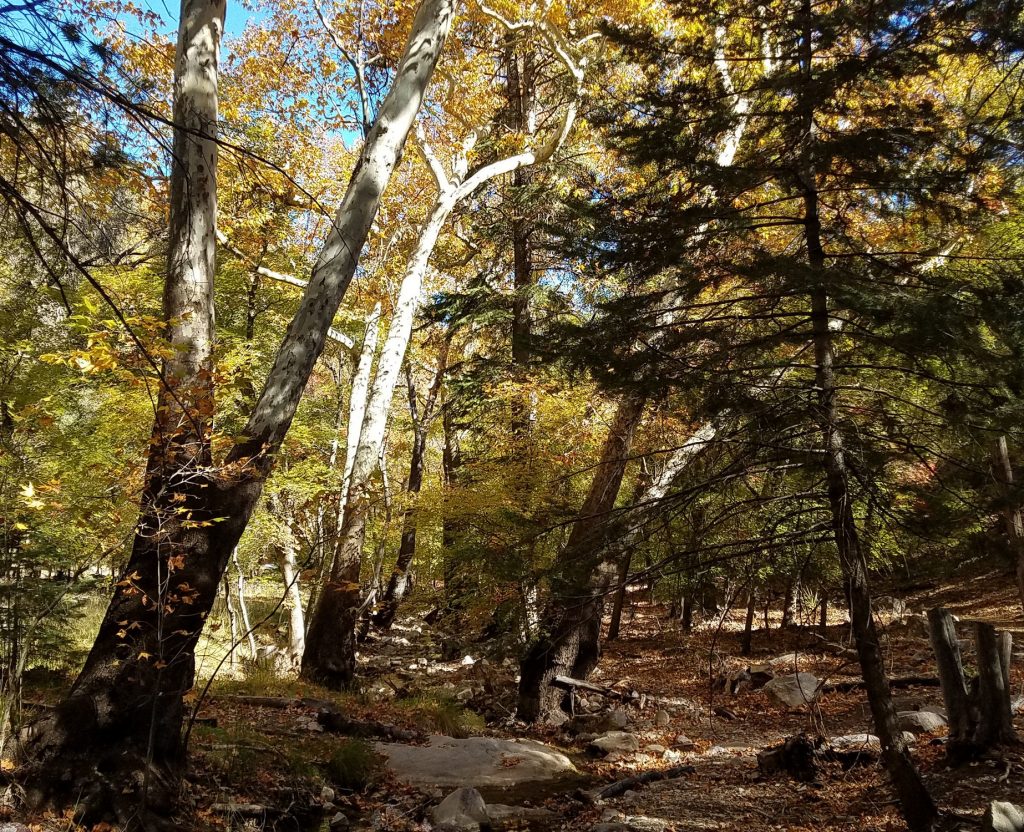
Most of the timber from the region was cut in the late 19th century, with the wood used for houses, mines and fuel in what were then fast-growing places like Tombstone and Bisbee, at the time among the fastest growing cities in the USA. Eric thinks that accessible forests were was mostly clear cut and the wood hauled away. Forests regenerated, but they were very different from those they displaced. The open and park-like coniferous forests were replaced by thick brushy forests of scrub oak. What these forests mostly produced was fuel for disastrous fires. When conifers did grow back, they also came in thick, what foresters call “dog hair” woods. These provide little space for the food that supports wildlife, and, like the scrub, they burn very hot.
On a tangent, Eric told us that the oak trees do not drop their leaves in autumn. They hold them throughout the winter and drop them in spring, before the hot and dry period in April and May. Those are the hottest two months. After that, the rains arrive and the wetter and cloudier weather cools the hills.
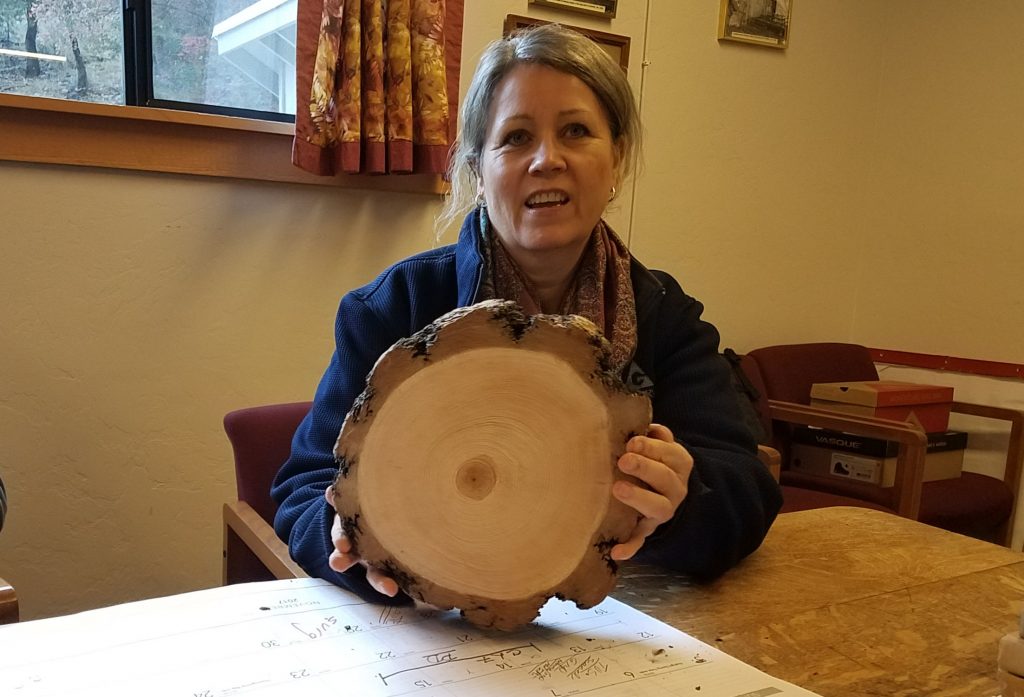
Fire was a key component of the pine forests. It burned through every 7-10 years, but those fires were low intensity. It knocked out the scrub but big trees were largely immune. The new fire regime featured less frequent but hotter fires that destroyed much of the standing forest and burned to the bare earth. It was a terrible cycle and we are still suffering. You can see a cross section of an Apache pine in the picture above. The thick bark is almost immune to low intensity fire. The two cuts you see below are about the same age. The one grew in an open forest; they other was part of a “dog hair” forest.
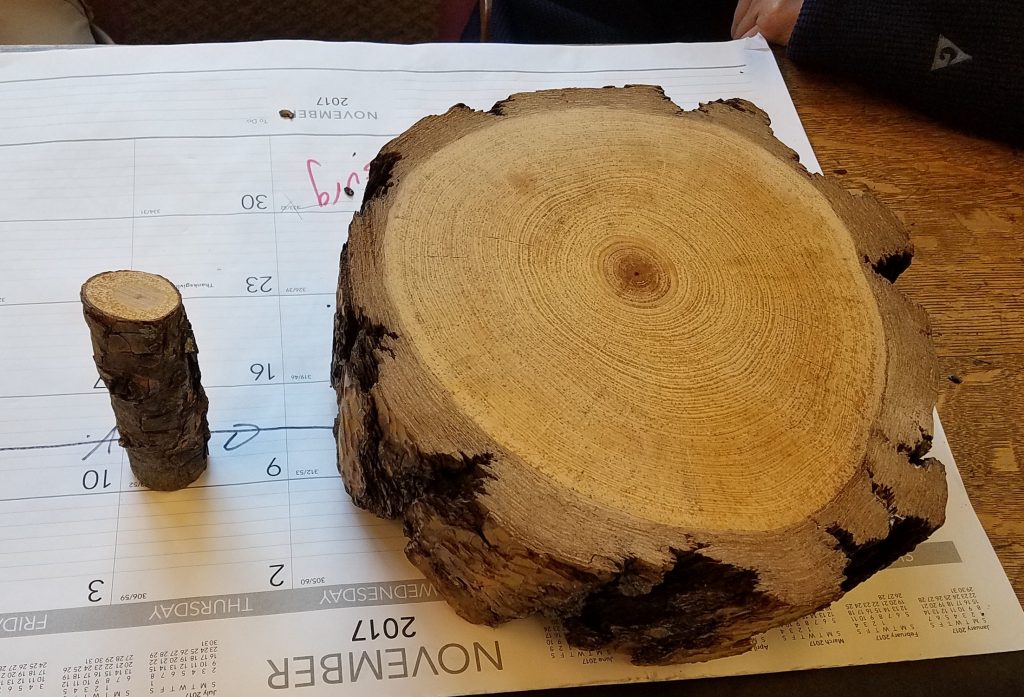
TNC wanted to reestablish natural rhythms, but could not used fire as much as the the natural ecology would indicate because there is too much chance of it getting away into nearby inhabited places. Another complication is that Ramsey Canyon is surrounded by wilderness areas. You would think that wilderness areas would be more “natural,” but you would be wrong. These areas were also impacted by the logging and mining of past, but now they are frozen in that state. They also grew back in the scrub and “dog hair” manner. They are full of fuel and are liable to burn in that disastrous way I mentioned above. Because they are officially called wilderness, they are subject to various restrictions and cannot be managed to reduce fuel and fire risk in ways that would be applied elsewhere.
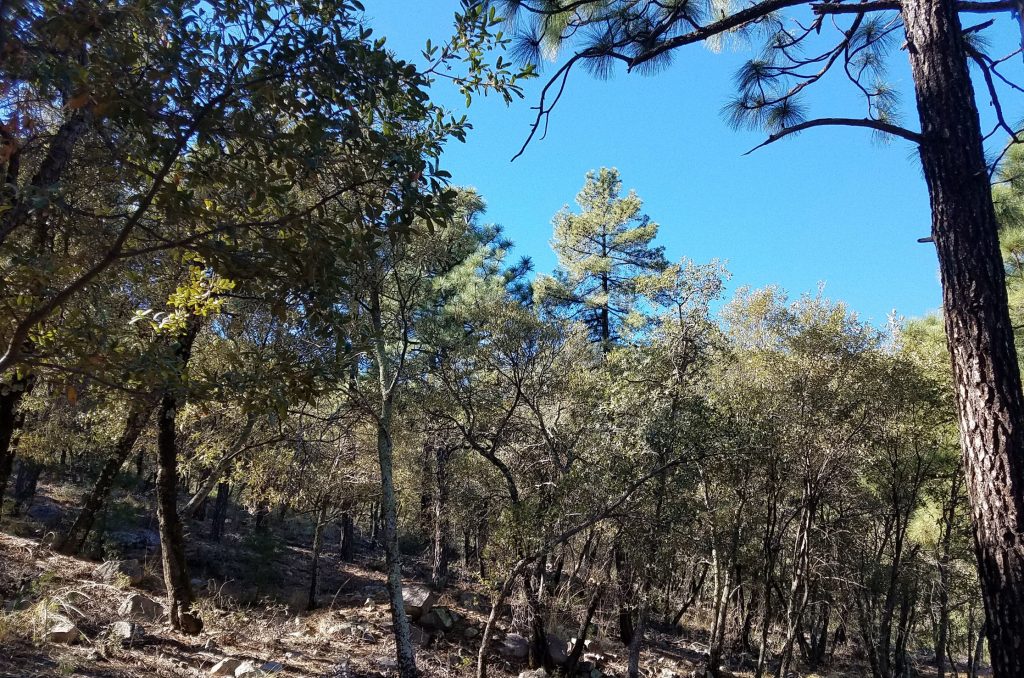
On the TNC land, they have thinned down the scrub oak on the north facing slopes and they hauled away the cutting. This is not as good as thinning followed by prescribed fire, but it as close as they can do under the current restraints. Some beneficial results are already clear. We saw regeneration of Apache and Chihuahuan pine, seedlings and young trees. The young Apache pine look a lot like longleaf in their grass and bottle brush stages.
There was a nice section of almost pure Apache pine. We could see carbon on the trunks and speculated that this area was fortunate to have a few low intensity fires pass through. It is amazing what comes back when you reestablish some of the natural factors. You can see the thinned brush above and below. Eric says that before the thinning, it was almost impossible to walk through the brush. Since the thinning, he has noticed that raptors like hawks have come to the area and more wildlife in general is present.
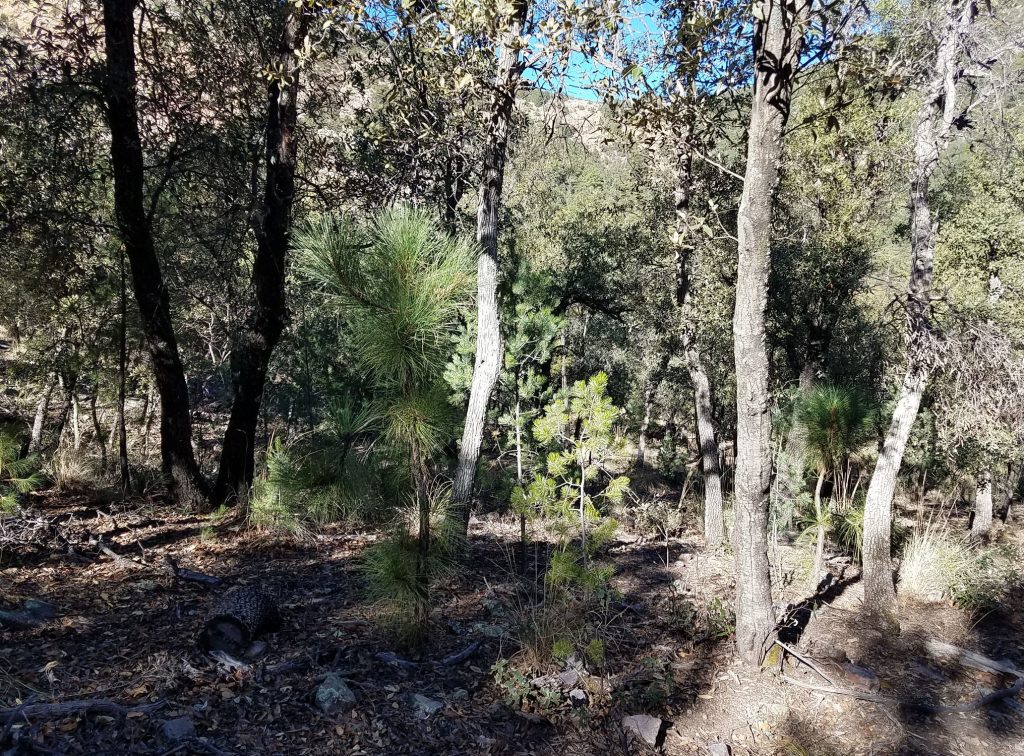
Eric shared a poignant story about the guys who do the thinning. They are convicts from the local prison. It is sought after work for them and Eric says that they are usually hard-working and thoughtful men, but with the big problem is that they cannot stay out of trouble. He says that when they get out on parole, they often come by with their wives or mothers to show them the work. They are proud of the work they did and the restoration they helped encourage. Eric stays in touch with some of them, but it is hard for them to stay on the straight and narrow. When they get out, they often fall in with the same sorts of people and lifestyles that caused them the trouble in the first place.
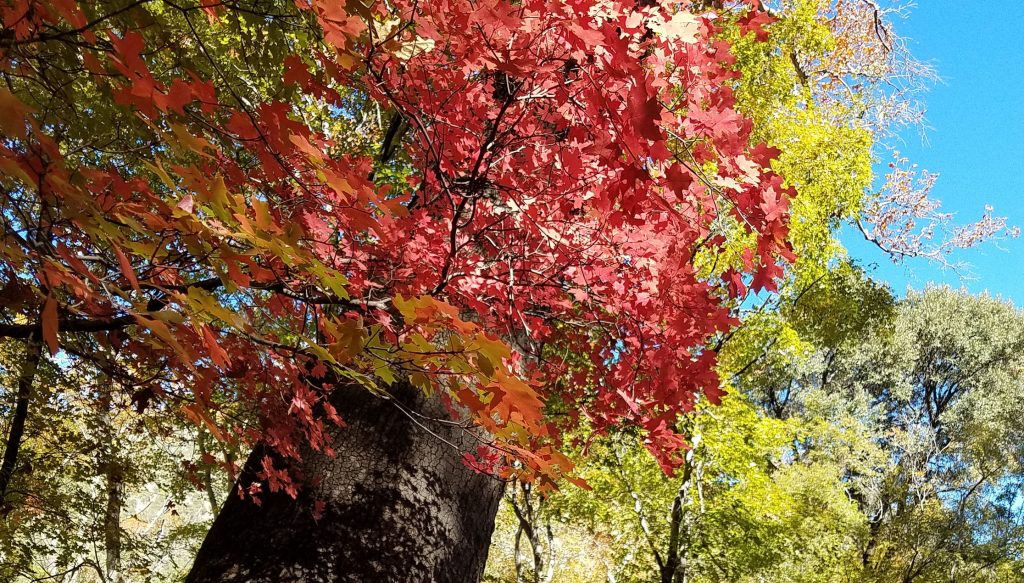
TNC is doing wonderful work to protect and regenerate these precious sky islands, and they do such excellent work wherever they are. I love what they are have done and are doing with longleaf. Theirs is the perfect combination of doing-learning-adapting and doing again. I have visited TNC preserves all over the country. Seeing their work and hearing about it from the people doing it is a great privilege.
Below is a link to more information about Ramsey Canyon.
Learning more about the local ecology
Went down to Piney Grove in Sussex County on a Nature Conservancy tour. They are restoring 3200 acres in Sussex County and looking to do even more. I visited once before but it is always fun to look at forests, always fun to hear about managing them and this time Chrissy came along.
The goal is to recreate a longleaf pine savanna and protect the endangered red cockaded woodpecker. This takes time, maybe 50-70 years or more. In the meantime, they are using lobolly that were already on the land. A loblolly savanna shares can be a substitute, but not quite as good.
Longleaf pine ecosystems, as I have written many times, is one of the most diverse in North America. They once covered 93 million acres in the southern USA. They were reduced to only 3 millions acres and literally only 200 trees in Virginia. The key to longleaf restoration is fire and TNC is applying this to its property on Piney Grove.
After touring Piney Grove and learning about the pines and the various flowers and grasses the under story, we went kayaking on the Nottoway River with TNC guys explaining the local environment. This river is clean and healthy, since it most of the watershed is in fields and forests. The water was shallow, but enough to float.
There are lots of big cypress trees near the shore. Their roots form protection for the shorelines. Natural levies line the banks and a little inland from are flood plain forests. It is a beautiful riparian ecosystem.
My picture show the kayaking on the Nottoway. Next is the pine savanna. You can see the current generation of loblolly and the – we hope – new generation of longleaf. After that are narrow leaf sunflower in bloom and finally the road through Piney Grove.
Lobbying for forests
Espen came along to this year’s forestry lobbying event. We went to see staffers involved in forestry or environment for the offices of Senators Warner & Kaine, and those of Representatives Connolly, Wittman, Goodlatte & Griffith.
We emphasized the urgent need to fix the way we fight wildfires and the important opportunity to use more wood in new ways through the Timber Innovation Act. I feel passionate about both these things. I know that we cannot avoid fires, but we can often choose place and times when they will be beneficial and not so dire. In the last year, I have become an evangelist for new uses of mass timber. I am eager to advocate for both these things. We also talked about tax policies. I let my colleagues do the talking. These are important issue too, but they are not among my key issues.
We were lucky enough to speak with Rep Connolly himself. Connolly is my Representative. We got to know him when he was Providence District seat on the Fairfax County Board. Chrissy met him a couple times when she was president of the Providence Park HOA. I always liked him and have voted for him. We talked a little about his support for the Mosaic District and the Gerald Connolly Trail, which we enjoy. There are no tree farms in Fairfax County, so we could not talk directly about that.
My pictures show similar views of the Capitol, the first with Espen. It was a nice, crisp day and the Capitol looked particularly beautiful today. The second last picture is General George Henry Thomas. He was a Virginian who chose to fight for the Union. Last is a sign on the Metro. I am not sure the prospect of turning an escalator into a slide would discourage young men.
Road From Vernal Utah
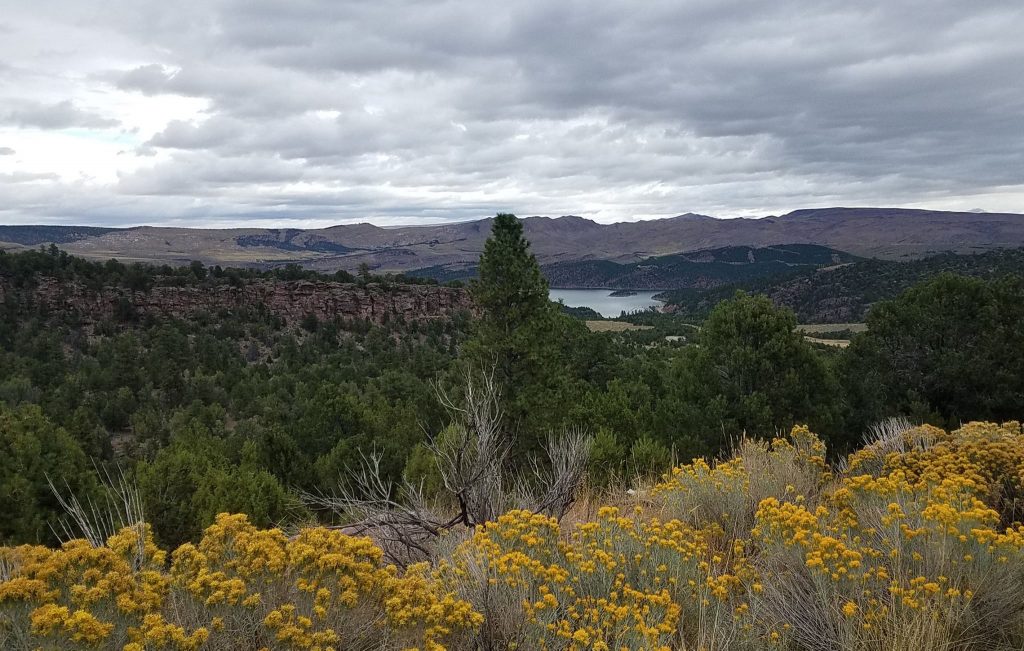
The road out of Vernal, Utah is marked with signs telling you the type of rock you are passing and the type of fossils found there. It is a very beautiful place in general.

As you go up the hill, you come on Steinaker Reservoir in the first picture. Next is a phosphate mine owned by a firm called Simplot. You can see the truck working in the second picture. The vastness of the landscape makes the very large truck look like a Tonka Toy, but the wheels are taller than I am. Next shows some of the quarrying.
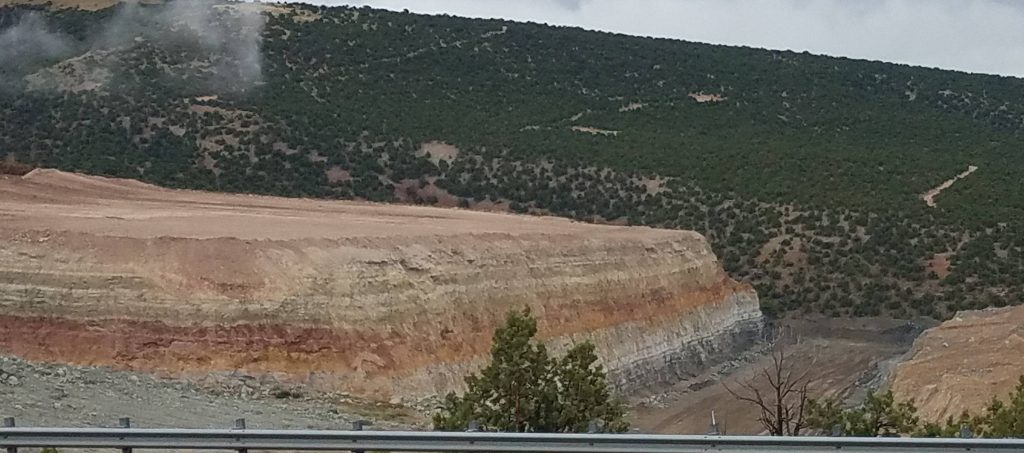
When you get over the hill, you come to the Flaming Gorge Dam, completed in 1964. It impounds the Green River, part of the Colorado River system.
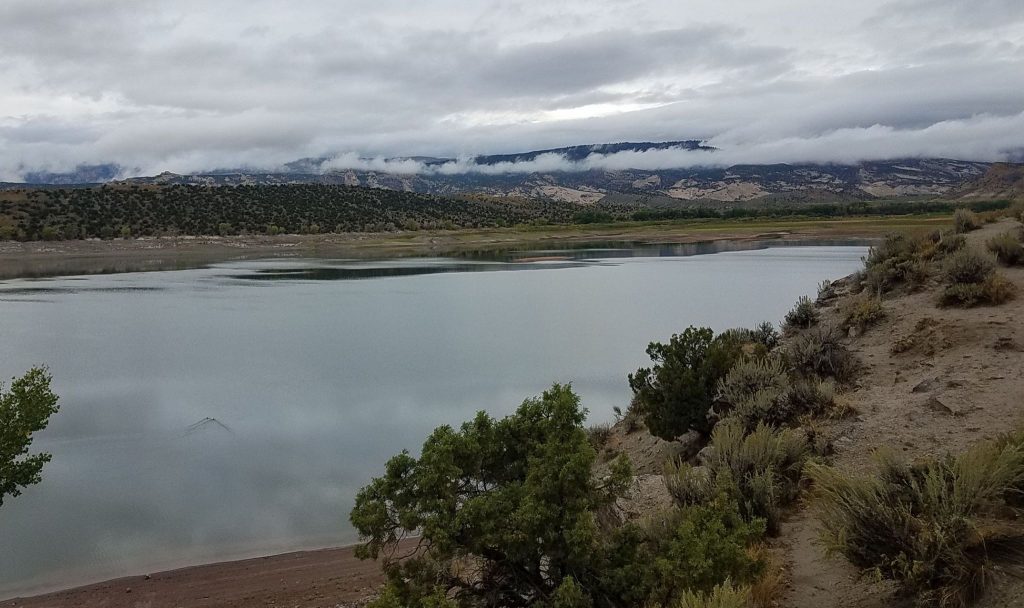
Forestry comparisons on Freeman
Before and after the 2017 growing season and before and after the fire. First picture is 2015 September, next 2017 February and then 2017 September.
Visit to Maryland forest
Just before I got home from my western trip, I took a short side trip to New Germany State Park in Garrett County, Maryland. The park was built by the CCC during the 1930s, after the government acquired land that previous owners figured out was better suited to trees than farming.
You get the impression that you are much farther north, since the CCC boys planted spruces. Hemlocks and white pine were already common in the area.
I was a little surprised but pleased to see a mature hemlock forest. I learned to appreciate hemlocks when I was at Stevens Point, Wisconsin, but they are threatened, especially in the south. Thirty years ago, there was a beautiful hemlock grove at Old Rag Mountain in Virginia, but the hemlock woolly adelgid made short work of it. It is so completely gone that you would think it never existed. I looked for news of the hemlock in New Germany Park on Google. I found one article from 2012, saying how volunteers were inoculating the trees. Hope it continues to work.
My pictures show the CCC lake, the hemlock forest and something you rarely see these days, a phone booth.

